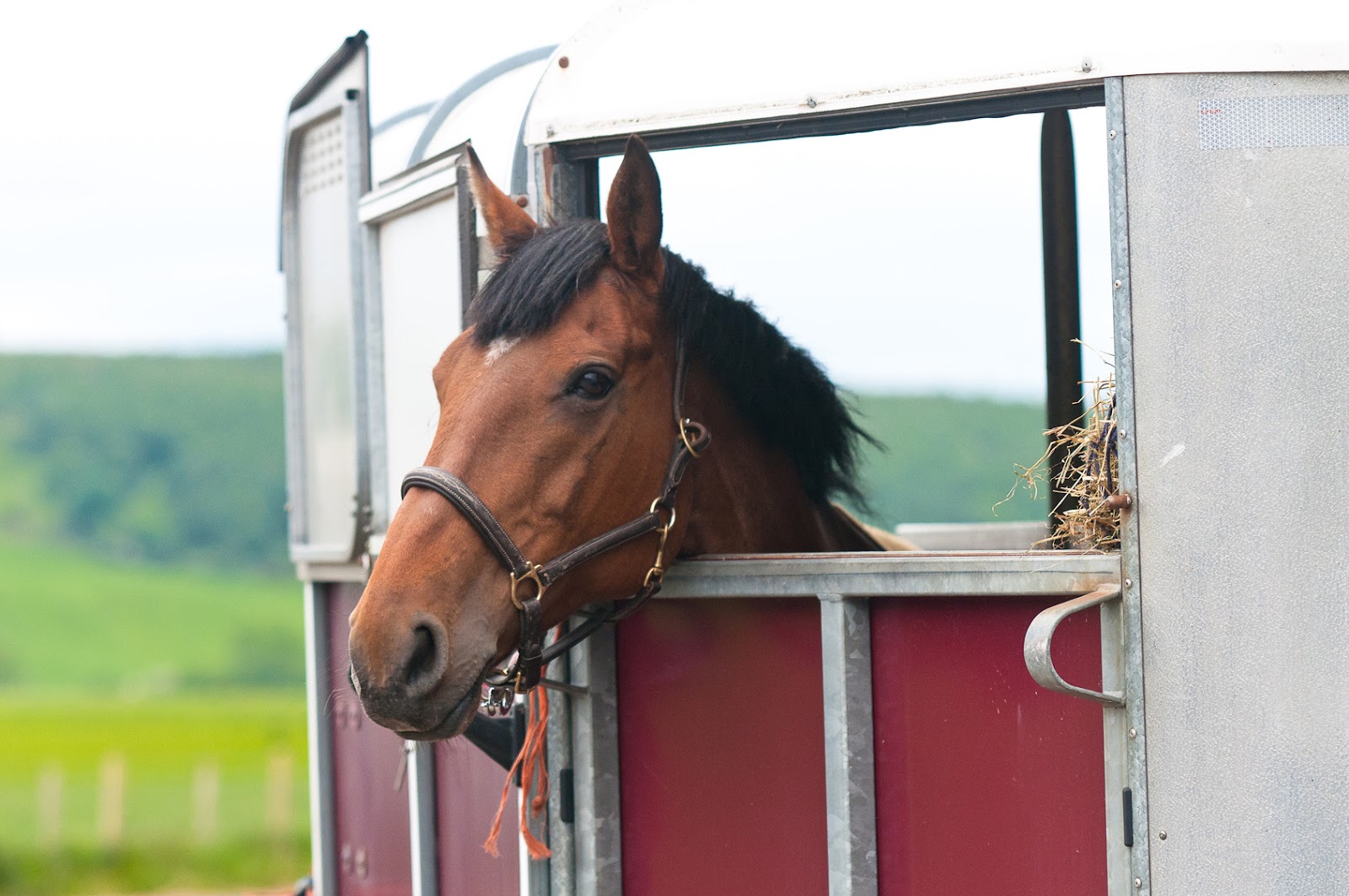Firstly, it's worth noting that the terms '
horsebox' and '
horse trailer' are sometimes used interchangeably, so to be clear, A horsebox is a self-contained vehicle which includes an engine, driver cabin, and horse transport areas all built on the same chassis. Horseboxes can be viewed as similar to an RV or light goods van, whereas, a horse trailer is a detached unit that needs a tow vehicle to transport it. Some trailers can only accommodate one horse while others have space for multiple animals.
This is what will likely determine what tonnage of horsebox you require. If you have only one light horse or two ponies, a
3.5 ton horsebox will likely suffice, but If you own two or more large horses, you'll require a
7.5 tonnes or larger horsebox to carry the weight.
When you're searching for a horsebox, it's incredibly important to understand payload and the maximum authorised mass - which, if exceeded, can make insurance void, put other road users at risk and potentially cause legal implications.
The payload is the amount of weight your horsebox is able to legally hold. This weight includes your horse(s), people, fuel, water and tack. If you're unsure of the payload of your horsebox, you can take it to a weighbridge to get an accurate reading, but typically the manufacturer of your vehicle should be able to advise you of the payload of your horsebox, unless there have been changes made since the product was bought. In short, the payload is the maximum weight of all included cargo, minus the weight of the vehicle itself.
If you still need more information - this
guide from KPH Horseboxes explains unladen weight, maximum authorised mass and payload in great detail, and will be a useful resource to use when educating yourself on horsebox ownership and the legal requirements of operating a horsebox.
What licence will I require?
In order to drive a 7.5 tonne horsebox, you will require a category C1 licence, which enables you to operate a horsebox that is between 3.5 - 7.5 tonnes of maximum authorised mass (MAM is the amount of weight the horsebox can carry safely when it’s being used on the road). As driving a horsebox with this heavy of a load can introduce you to concerns you wouldn't experience when driving a car (such as differences in braking and turning corners), it is recommended that individuals that are new to horsebox ownership and horse transportation take the appropriate training before using their 7.5 tonne horsebox on the roads. You can access training via the
HGVT Training centre here.
What to look out for when viewing second hand horseboxes
We recommend that you view a horsebox before your purchase, regardless of whether it is new or used, to ensure that you get the scope of the vehicle and can truly determine whether it is suitable for your needs. When checking a horsebox physically, there are a few things that you should keep in mind, and areas of the vehicle you should pay extra attention to.
The floor in the horse/stall area
More affordable horseboxes tend to have floors that are made from plywood, with rubber matting or coatings on the surface. In good condition, this style of flooring is more than capable of taking the weight of the horses or ponies you are transporting, but it is always necessary to inspect the condition of the flooring in this area before committing to a sale. When inspecting wooden flooring, lift up the matting that is on the surface and check for any potential rotting, water damage or other structural weaknesses in the form of cracks or holes.
Wooden flooring can be relatively easily replaced if you feel that it requires doing so, so if there is some damage, but not enough that it stops the sale then and there for you, keep this in mind, and perhaps even ask the seller if they know more of the history of the flooring or if they can recommend a place to seek repairs or refitting.
The underside of the flooring in the horse/stall area
Once you've finished your inspection of the flooring from within the stalls, it is wise to take a look at the floor from underneath the vehicle to see if there is anything you have missed from within, as the view from the ground up may expose unexpected issues.
You should aim to do a similar inspection of the ramp that is attached to the horsebox, as this component is just as important as the main flooring, and can ware quickly if used often. If you are struggling to lift the ramp yourself, there is always the potential to adjust the springs on the ramp to allow for a little more support, as there is nothing worse than struggling with the weight of your ramp whilst getting your horses prepared for their journey.
Check the Ceiling
Just like the floor, it is important that the ceiling of your horsebox is structurally sound in order to avoid placing your horses, ponies or any other cargo in direct danger of a broken roof. You should aim to keep an eye out for leaking or deep cracks in the surface. Cracks in the surface of the ceiling can typically be repaired with ease, by replacing the existing sealant and blocking up any cracks that have appeared. Areas that have seen some moisture build up due to leaks will require cleaning and further inspection/care.
Ventilation, Partitions and overall safety within the horse area
Ensure that you check that ventilation is in good condition, as well as the partitions between stalls. These are easy details to miss, but are very important things to keep in mind when transporting your horses, both for their safety and comfort. You should aim to make note of any loose fittings or sharp edges that could hurt your horse or pony, these will either need to be replaced, fixed or removed if you are able. Making sure your horse would be comfortable within this space is one of the most important aspects to consider when horsebox shopping. You also want to check thoroughly that the partition between the drivers cab and the horse area is sufficiently strong, for general safety - and that you would be able to get your horse out of this area efficiently in the event of an emergency.
Leaks and rust
If a leak has been present on a surface for a long period of time, the material may have some indication of mould, rotting or rust, so being aware of this kind of damage when viewing a horsebox can help to educate your purchasing decision. Rust on surfaces or underneath the cab is often times okay, especially in older horsebox models, but only as long as it isn't the kind of rust that deeply penetrates the material, causing further breakdown of the surface.
Living Area and Drivers Cab
If the horsebox you are viewing has a living area of any kind, it is worth checking that lights, appliances, windows and any other necessary features are in working order, horseboxes are already an expensive investment, so the last thing you want to do is cash out to fix things that should've already been within working order such as toilets or water systems. Similarly to your check of the horse area, you also want to ensure that this area is safe for your use, and that you would be able to escape the vehicle efficiently in the event of an emergency that requires the evacuation of yourself and your horses.
Typically horsebox selling businesses will take care of these checks for you, and make you aware of any areas of concern, but if you're purchasing a horsebox from someone who isn't a horse owner, or has less experience in the importance of recognising issues that are unique to horseboxes, it is worth educating yourself on these checks, so that you are able to be confident in your purchasing decisions and avoid any disagreements with a seller.

Mileage
If the mileage on a horsebox is high, don't despair! This can be perfectly normal, especially as some horseboxes may have had a previous life as commercial vehicles used to carry heavy cargo on a daily basis. As long as the vehicle has been well looked after and runs well, the mileage isn't something to worry too much about.
Newer, more expensive horsebox models are sometimes built onto brand new chassis', therefore costing more money, but lowering the mileage total, so that as the horsebox ages, it still remains within what would be considered a low mileage amount.
Paperwork & Finance
Once you feel like you've chosen the right 7.5 tonne horsebox for your needs, you must make sure that you receive a HPI certificate (standing for 'Hire purchase investigation') which contains a basic vehicle history check - these certificates disclaim whether the vehicle you are planning to purchase has been financed elsewhere, written off due to insurance claims, stolen or damaged in past accidents.
And now you're ready!
That's an overview of owning and buying a
7.5 tonne horsebox! If you're thinking about taking the plunge and purchasing a more robust horsebox of your own, we hope that this guide has been helpful in giving you an idea of what to expect. Remember to do your research and ask around for advice from those who have more experience than you - there are lots of great horse people out there who would be more than happy.
Do you have a horsebox related question that you'd love an answer to, or a topic you'd like us to cover? Let us know in the comments below and keep an eye for our reply!



